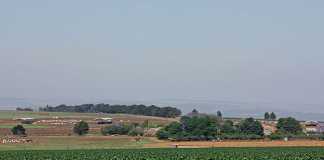“This year, the mad abandon with which financial institutions dished out credit cards also played a role.’
Sharp increases in prices have a psychological effect on market participants. This is true for share prices and also for agricultural prices. Increasing prices create a feeling of well-being amongst market participants. They soon believe that the price increases will be permanent. The “greater fool theory” becomes applicable and people are prepared to pay very high prices for products as they believe they will in time find a greater fool to buy the product at a still higher price from them.
Some years ago a Wall Street Journal writer compared this with the effect of a too-high altitude on mountaineers. The lack of oxygen leads to a feeling of invincibility which then usually results in tragedy.
Livestock prices again demonstrated this phenomenon last year. C lass A beef prices increased from around R16,50/kg in February 2006 to R22/kg in October 2006 (up 46%). Weaner prices increased by 22% from January 2006 to January 2007. This is 33% higher than the 2004 to 2006 average price. Lamb and mutton prices increased during 2006 by 20%. Pork prices did likewise – porker prices increased by 15% and baconer prices by 25% compared to the previous year. Poultry prices strengthened on the back of strong demand, driven by higher beef prices.
At the end of 2006 a few voices of caution told farmers that the high prices were caused by a unique combination of factors and that prices would decrease as the effect of these factors declined.
Since mid-January prices did decrease sharply. Various factors led to the decrease in meat prices. February is a difficult month for consumers. The long-term trend in beef prices shows a clear seasonal pattern with a trough at the beginning of the year. This year, the mad abandon with which financial institutions dished out credit cards also played a role.
Consumers took up this extra credit and in many cases used these credit cards to the hilt during the festive season. They must now repay the money they borrowed during December. Last year farmers were major buyers of weaners, especially as the 2005 maize prices were very low. This is no longer true. The higher maize price (up 71% on the same month of the previous year) makes it difficult to buy weaners at the price of up to R18/kg – not exceptional during November 2006 – and still make a profit. At current maize prices, AMT livestock specialist Pieter Cornelius calculates that a weaner price of R10,12/kg will just allow a feedlot to break even. Clearly a price of R18/kg is not sustainable in the long run. Prices have thus decreased to more realistic levels.
Will prices increase again?
Prices are mainly determined by interaction between supply and demand, or more correctly, by interaction between perceptions of future supply and demand. Internationally the fast growth of the biofuels industry has resulted in higher grain prices and in an increase in future price predictions. According to the USDA’s Economic Research Service, rising per capita incomes, combined with population growth in a number of countries, will drive a steady increase in the demand for meat. South America and particularly Brazil and Argentina will play a major role in future meat exports. World prices will probably remain firm. If Brazil again becomes a major exporter to South Africa, local beef prices will face pressure from imported products.
However, the current drought in South Africa will probably result in a lower supply of high-grade meat during the coming winter. Maize prices increases will put further pressure on supplies.
The very high prices farmers obtained during 2006 were caused by a combination of factors that worked together to create a supply shortage while demand remained robust. Prices will probably remain stable but unfortunately not at the levels reached during the last half of 2006. The movement of livestock prices over the past two years clearly shows that agricultural production and prices move in cycles. Those farmers who read the cycles correctly and farm accordingly made a lot of money out of surplus livestock in 2006. Those who climbed on the livestock wagon in 2006 will have to wait for the next upswing. Timing is all-important in agriculture. • Dr Koos Coetzee is an agricultural economist at the MPO. All opinions expressed in this column are his own. |fw




